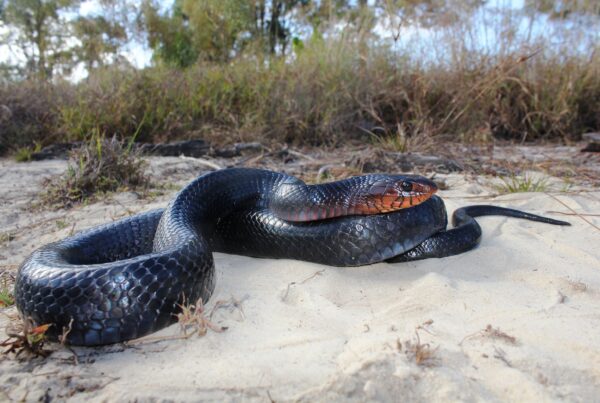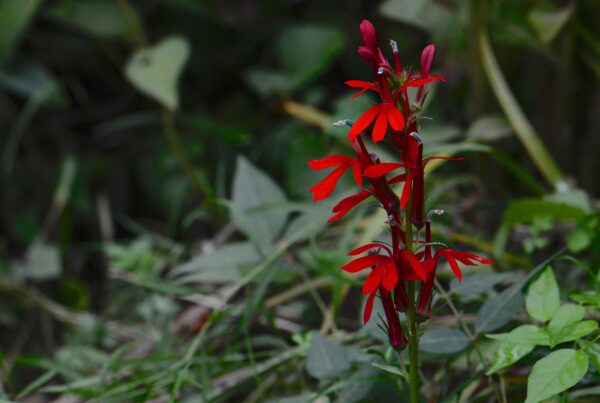Florida Arbor Day is coming up on January 17 and is the perfect opportunity to plant a tree and help create a greener, healthier future for our communities and wildlife. While live oaks are first to come to mind, as they’re renowned for their grandeur and ability to support countless caterpillar species that birds and other wildlife depend on, they aren’t the best fit for smaller yards.

Fortunately, Florida is home to a variety of beautiful native trees that thrive in compact spaces. These trees not only enhance your outdoor space but also provide vital habitat and resources for local wildlife. This Arbor Day, consider planting a native tree to make a lasting impact on Florida’s natural beauty!
Planting the Arbor Day Seed
Arbor Day, a celebration of tree planting and conservation, has its roots in 1872 Nebraska, where journalist and politician J. Sterling Morton proposed dedicating a day to encourage individuals and communities to plant trees. The first Arbor Day resulted in the planting of over a million trees across Nebraska, inspiring a nationwide movement. Today, Arbor Day continues to promote the critical role trees play in sustaining our ecosystems, providing habitat, improving air and water quality, and enhancing the beauty of our landscapes.

Why Plant Native Trees
Native trees are adapted to Florida’s unique climate and soils, making them more resilient and generally easier to care for. They also provide food and shelter for birds, butterflies, and other wildlife, enhancing biodiversity right in your backyard.
Small Native Trees for Florida Yards
If you’re looking to plant a tree this Arbor Day and need a shrub or tree for a smaller space, consider these options:

Fiddlewood (Citharexylum spinosum)
A wonderful shrub or small tree for South Florida, this evergreen grows in full sun to part shade with flowers and fruits throughout the year. The fiddlewood is a good wildlife tree for birds, small mammals, butterflies, moths and bees.
Simpson’s stopper (Myrcianthes fragrans)
Gardens in Northeast, Central and South Florida are good spaces for this plant. In sun or part shade, it can be grown as a shrub or a focal point (specimen) tree, depending on the variety and pruning. Showy fruits and flowers support birds, bees, and butterflies. This species is listed as a threatened plant in Florida, so you should purchase it from a reputable grower or nursery and never harvest it in the wild.


Sweet-bay magnolia (Magnolia virginiana)
Gorgeous, fragrant flowers, showy fruits, interesting foliage and wind resistance are some of the many features of this magnolia. Rain gardens offer good sites for this tree that grows naturally in wetlands throughout the state. Fruits and seeds are eaten by scores of bird species, and pollinators and small mammals also use the flowers and fruit.
Eastern redbud (Cercis canadensis)
Native to upland hardwood forests in the Panhandle through Central Florida, the redbud has vibrant pink blooms in late winter to early spring. The early flowers provide support for pollinators before other trees and wildflowers start to bloom.


White fringe tree (Chionanthus virginicus)
Snowy white flowers with narrow petals in spring give the fringe tree its nickname, “Grancy Graybeard.” Moist habitats from the Panhandle to Central Florida are this tree’s natural habitat, but it’s adaptable to many conditions. Fruit ripens in the fall and is eaten by birds and small mammals. Several moth species use the fringe tree as a larval host plant.
Tips for Successful Tree Planting
- Choose the Right Spot: Ensure the tree has the recommended amount of sunlight or shade, and space to grow to its full size without interference from buildings or power lines.
- Water Regularly: Young trees need consistent watering as they establish roots, especially in Florida’s dry season.
- Add Mulch: Mulching around the base of the tree helps retain moisture and reduces competition from weeds. Place the mulch at least a few inches away from the trunk, not touching the tree. Though you might see mulch piled up around trees, this “volcano mulch” isn’t good for the tree.
Get Involved This Florida Arbor Day
Celebrate by planting a tree in your yard, volunteering at a community tree-planting event, or visiting your local nursery to learn more about the benefits of native trees. Florida Arbor Day is the perfect opportunity to make a positive impact on our environment, and there’s no shortage of ways to get involved.
Not sure where to start? Check out local events in your area—many communities host tree-planting days, workshops, or educational programs that provide hands-on opportunities to give back. If you’re near Wakulla County, FWF will be participating in the Crawfordville Arbor Day on Saturday, January 18.
These events are not only a great way to contribute but also a chance to connect with others who share your passion for nature.

Together, we can create greener spaces, support native wildlife, and build stronger, healthier ecosystems across Florida.






